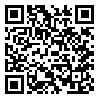1. Abounoori, E. & Zobeiri, H. (2010). Exchange Rate Gap Effect on Economic Growth in Iran. International Review of Business Research Papers, 6(6): 66-77.
2. Albuqurque, Ch. & Portugal, M., S. (2006). Testing Nonlinearities Between Brazilian Exchange Rate and Inflation Volitilities. Banco Central Brazil Working Paper Series, No.106.
3. Azimi, R., Miri A. S., Taghizadeh, Kh. & Samadi, R. (2013). Invetigation the trends and causes of inflation in Iran during 2010-2012 and the measures taken to contain it. Financial & Economic Policy Journal, 1(1), 25-58.
4. Bonato, L. (2007). Money and Inflation in the Islamic Republic of Iran. IMF Working Paper, No. 119. [
DOI:10.5089/9781451866834.001]
5. Central Bank of Iran, www.cbi.ir
6. Edwards, S. (1989). Exchange rate misalignment in developing countries. The World Bank Research Observer, 4(1): 3-21.
7. Edwards, S. (2006). The Relationship Between Exchange Rate and Inflation Targeting Revisited", Central Bank of Chile Working Paper, No. 409.
8. Giannellis, N. & Koukouritakis, M. (2013). Exchange Rate Misalignment and Inflation Rate Persistence: Evidence from Latin American Countries. International Review of Economics and Finance. 25: 202-218.
9. Goldfajan, Ilan and Sergio R.C Werlang (2000)," The Pass-Through from Depreciation to Inflation; a panel study", Series Texts Para Discussion 423, Department of Economics PUC-Rio Brazil.
10. Harvey, A. C. (1990). Forecasting, Structural Time Series Models and the Kalman Filter. Cambridge University Press. [
DOI:10.1017/CBO9781107049994]
11. Harvey, A. C., & Shephard, N. (1993). Estimation and Testing of Stochastic Variance Models. Suntory Toyota International Centre foe Economics and Related Disciplines, London School of Economics.
12. Harvey, A. C., & Proietti, T. (2005). Readings in Unobserved Components Models. Oxford University Press.
13. Hufner, F., P. & Schroder. M. (2002). Exchange Rate Pass-Through to Consumer Prices: A European Perspective. ZEW Working Paper, 20. [
DOI:10.2139/ssrn.304939]
14. Jayaraman, T. K. & Choong, C., K. (2011). Impact of Exchange Rate Changes on Domestic Inflation: A Study of a Small Pacific Island Economy. Centre for Economic Studies, MPRA Paper, 33719.
15. Kalman, R. E. (1960). A New Approach to Linear Filtering and Prediction Problems, Transactions of the ASME- Journal of Basic Engineering, 82: 35-45.
16. Khoshbakht, A. & Akhbari, M. (2007). Investigation the impact of exchange rate on inflation, consumer price indices and import in Iran. Economic Research, 7(4), 51-82.
17. Kriljenko, J. I. C. R. Guimaraes & C. Karaca (2003). Official Intervention in Foreign Exchange Market: Element of Best Practice, IMF Working Paper, No. 03152.
18. Liu, O. & Adedegi, O. S. (2000). Determinants of Inflation in the Islamic Republic of Iran; A Macro Economic Analysis. IMF Working Paper, No.127. [
DOI:10.5089/9781451854978.001]
19. Nasr Esfahani, R. & Yavari, K. (2003). The Nominal and Real Factors of Iran's Inflation; Vector Analysis Regression Approach. Journal of Iran's Economic Research, 16, 66-99. Pinto, B. (1991). Black Market for Foreign Exchange, Real Exchange Rate and Inflation. Gournal of International Economics, 30, 121-135.
20. Rateghi, M. (2005). The effect of exchange rate fluctuations on Price Indices. Master's thesis. Economic department, Tehran University.
21. Razin, O & Collins, S. M. (1997), Real Exchange Rate Misalignment and Growth. NBER Working Paper, No.6174. [
DOI:10.3386/w6174]
22. Shahab, M. (1997). Exchange rates and inflation: An Empirical Analysis of Iran. Master's thesis. Economic department, Tehran University.
23. Shi, J. (2000). The Black Market Premium and the Rate of Inflation in a Dual Exchange Rate Regime. International Journal of Finance & Economics, 5, 77-88.
https://doi.org/10.1002/(SICI)1099-1158(200002)5:1<77::AID-IJFE112>3.0.CO;2-A [
DOI:10.1002/(SICI)1099-1158(200002)5:13.0.CO;2-A]
24. Valadkhani, A. (2003). An Empirical Analysis of the Black Market Exchange Rate in Iran. Asian-African Journal of Economics and Econometrics. 4(2): 141-52.
25. Villanueva, D. (1993). The Macroeconomic Effects of Exchange Rate Unification, with Special Reference to the Islamic Republic of Iran, IMF Working Paper, No. 92.
26. World Development Indicator (WDI). World Data Bank.
27. Zamanzadeh, H. & Alhoseini, S. (1391). Iran's Economy: In Straits of Development. Markaz Publishing.
28. Zobeiri, H. & Elmi, Z. M. (2009). Effect of exchange rate on inflation gap. Human Science Journal, Semnan University, (29), 99-118.









